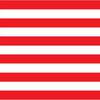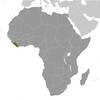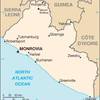Liberia [+]Compare [E]dit [H]istory
Aliases: Republic of LiberiaObject «Liberia» was created due to
Add new object to «Liberia» or move existing objects here.
Object «Liberia» has attributes [Show empty attributes][Hide empty attributes]
| Attribute | Value |
|---|---|
| Geography | |
| Area | 111,369 km² |
| Continent | Africa |
| Land area | 96,320 km² |
| Water area | 15,049 km² |
| Land boundaries | 1,667 km |
| Border countries |
|
| Coastline | 579 km |
| Mean elevation | 243 m |
| Lowest point | 0 m |
| Highest point | 1,447 m |
| People | |
| Population | 5,073,296 |
| Official languages |
|
| Religion | Christian |
| Government | |
| Long country name | Republic of Liberia |
| Short country name | Liberia |
| Long local name | Add |
| Short local name | Add |
| Former name | Add |
| Government type | Presidential republic |
| Capital | Monrovia |
| Economy | |
| GDP (PPP) | 6,112,000,000 USD |
| GDP (OER) | 3,285,000,000 USD |
| GDP (real growth rate) | 2.5 % |
| GDP - per capita (PPP) | 1,300 USD |
| Gross national saving | Add |
| Labor force | 1,677,000 |
| Unemployment rate | 2.8 % |
| Population below poverty line | 54.1 % |
| Budget revenues | 553,600,000 USD |
| Budget expenditures | 693,800,000 USD |
| Military expenditures | 0.77 % of GDP |
| Taxes and other revenues | 16.9 % of GDP |
| Budget surplus or deficit | -4.3 % of GDP |
| Public debt | 34.4 % of GDP |
| Inflation rate | 12.4 % |
| Central bank discount rate | 3.2 % |
| Commercial bank prime lending rate | 13.3 % |
| Stock of narrow money | 423,000,000 USD |
| Stock of broad money | 423,000,000 USD |
| Stock of domestic credit | 792,300,000 USD |
| Market value of publicly traded shares | Add |
| Current account balance | -627,000,000 USD |
| Exports | 260,600,000 USD |
| Imports | 1,166,000,000 USD |
| Reserves of foreign exchange and gold | 459,800,000 USD |
| External debt | 1,036,000,000 USD |
| National currency | Liberian dollars |
| National currency (code) | LRD |
| National currency (symbol) | $ |
| National currency rate to USD | 109.4 |
Settlement of freed slaves from the US in what is today Liberia began in 1822; by 1847, the Americo-Liberians were able to establish a republic. William TUBMAN, president from 1944-71, did much to promote foreign investment and to bridge the economic, social, and political gaps between the descendants of the original settlers and the inhabitants of the interior. In 1980, a military coup led by Samuel DOE ushered in a decade of authoritarian rule. In December 1989, Charles TAYLOR launched a rebellion against DOE's regime that led to a prolonged civil war in which DOE was killed. A period of relative peace in 1997 allowed for an election that brought TAYLOR to power, but major fighting resumed in 2000. An August 2003 peace agreement ended the war and prompted the resignation of former president Charles TAYLOR, who was convicted by the UN-backed Special Court for Sierra Leone in The Hague for his involvement in Sierra Leone's civil war. After two years of rule by a transitional government, democratic elections in late 2005 brought President Ellen JOHNSON SIRLEAF to power. She subsequently won reelection in 2011 but was challenged to rebuild Liberia's economy, particularly following the 2014-15 Ebola epidemic, and to reconcile a nation still recovering from 14 years of fighting. Constitutional term limits barred President JOHNSON SIRLEAF from running for re-election. Legal challenges delayed the 2017 presidential runoff election, which was eventually won by George WEAH. In March 2018, the UN completed its 15-year peacekeeping mission in Liberia.
Similar objects
Most often compared with
- [⇄] [+] Congo, Democratic Republic of the
- [⇄] [+] Central African Republic
- [⇄] [+] Guatemala
- [⇄] [+] Comoros
- [⇄] [+] Maldives
Everyone can something to edit or add.
There was one edit, no edits waiting approval. Last edited by romaguera.shemar(9697), Sep 16, 2019 (57 fields were changed)
Help · Contact us · Disclaimer · Contributors · Developers · Donate


